This article needs additional citations for verification .(April 2019) |
| |||||
| Centuries: | |||||
|---|---|---|---|---|---|
| Decades: | |||||
| See also: | Other events of 1527 List of years in Ireland | ||||
Events from the year 1527 in Ireland [1] .
This article needs additional citations for verification .(April 2019) |
| |||||
| Centuries: | |||||
|---|---|---|---|---|---|
| Decades: | |||||
| See also: | Other events of 1527 List of years in Ireland | ||||
Events from the year 1527 in Ireland [1] .
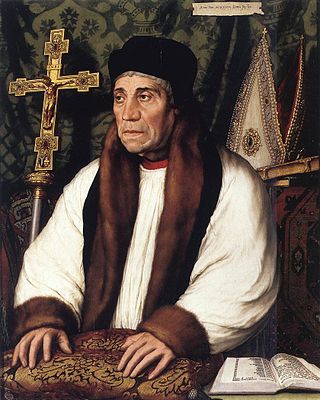
William Warham was the Archbishop of Canterbury from 1503 to his death.
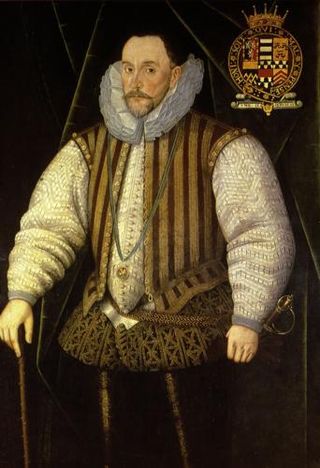
Henry Herbert, 2nd Earl of Pembroke, KG, KB was a Welsh nobleman, peer and politician of the Elizabethan era. He was the nephew of Catherine Parr, and brother-in-law of Lady Jane Grey, through his first wife.
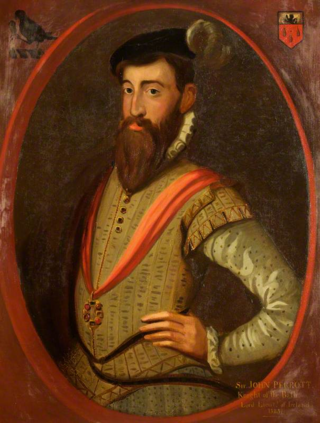
Sir John Perrot served as lord deputy to Queen Elizabeth I of England during the Tudor conquest of Ireland. It was formerly speculated that he was an illegitimate son of Henry VIII, though the idea is rejected by modern historians.
Sir John Perrot, was a figure of unusual power and influence in Tudor Britain and Ireland. Born near Haverfordwest in 1528, he inherited wealth and power – the Perrots had been accumulating both in west Wales for centuries – and gained more ingratiating himself with the English court.
His own son described him as a "very cholericke" man, who "could not brooke any crosses". He had already gathered many offices by the time he was sent to Ireland in 1571 as President of Munster to suppress a rebellion. His methods were characteristically violent – he hanged over 800 of the rebels – but he resigned after two years, having failed in his mission.
Back in west Wales he contented himself with self-enrichment and self-glorification, rebuilding in grand style his two main homes, Carew Castle and Laugharne Castle. He returned to Ireland as 1584 as Lord Deputy, with the task of crushing the Irish and colonising their land. Again unsuccessful, he returned, was falsely accused of treason by his many enemies, and died in the Tower of London in 1592, possibly of poisoning.
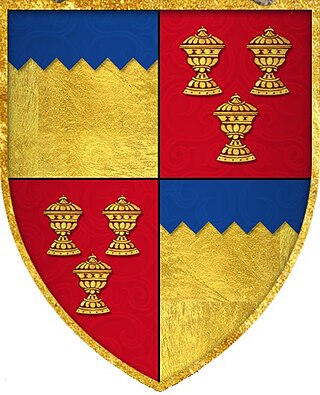
Piers Butler, 8th Earl of Ormond, 1st Earl of Ossory also known as Red Piers, was from the Polestown branch of the Butler family of Ireland. In the succession crisis at the death of Thomas Butler, 7th Earl of Ormond he succeeded to the earldom as heir male, but lost the title in 1528 to Thomas Boleyn. He regained it after Boleyn's death in 1538.

The Dean of St Patrick's Cathedral is the senior cleric of the Protestant St Patrick's Cathedral, Dublin, elected by the chapter of the cathedral. The office was created in 1219 or 1220, by one of several charters granted to the cathedral by Archbishop Henry de Loundres between 1218 and 1220.

Henry Norris, 1st Baron Norreys of Rycote in Oxfordshire, was an English politician and diplomat, who belonged to an old Berkshire family, many members of which had held positions at the English court.
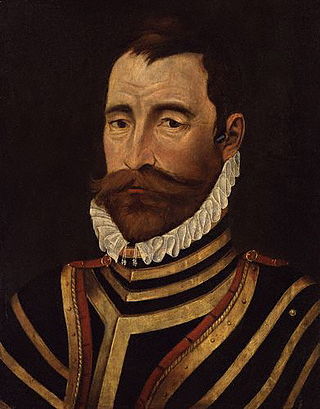
Sir William Drury was an English statesman and soldier.
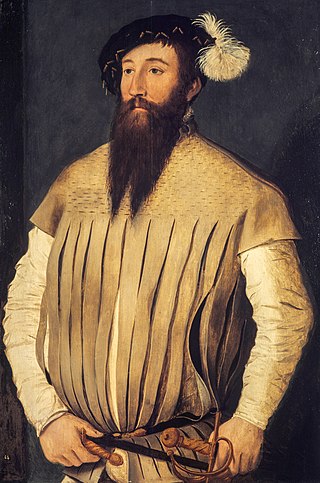
Sir Peter Carew of Mohuns Ottery, Luppitt, Devon, was an English adventurer, who served during the reign of Queen Elizabeth I of England and took part in the Tudor conquest of Ireland. His biography was written by his friend and legal adviser, the Devon historian John Hooker.
Sir William FitzWilliam (1526–1599) was an English Lord Justice of Ireland and afterwards Lord Deputy of Ireland. In 1587, as Governor of Fotheringhay Castle, he supervised the execution of the death sentence on Mary, Queen of Scots. He was the Member of Parliament for Peterborough and represented County Carlow in the Irish House of Commons. He lived at Gainspark, Essex, and Milton Hall.
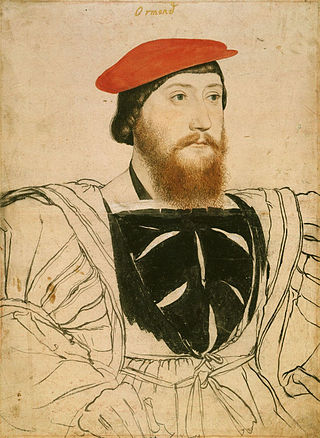
James Butler, 9th Earl of Ormond and 2nd Earl of Ossory, known as the Lame, was in 1541 confirmed as Earl of Ormond thereby ending the dispute over the Ormond earldom between his father, Piers Butler, 8th Earl of Ormond, and Thomas Boleyn, 1st Earl of Wiltshire. He died from poison in London.

Irish Catholic Martyrs were 24 Irish men and women who have been beatified or canonized for dying for their Catholic faith between 1537 and 1681 in Ireland. The canonisation of Oliver Plunkett in 1975 brought an awareness of the others who died for the Catholic faith in the 16th and 17th centuries. On 22 September 1992 Pope John Paul II proclaimed a representative group from Ireland as martyrs and beatified them.
Events from the 1530s in England.
Events from the 1520s in England.
Sir Edward Fitton the elder, was Lord President of Connaught and Thomond and Vice-Treasurer of Ireland.
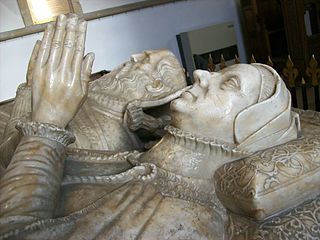
John Williams, 1st Baron Williams of Thame was Master of the Jewels and Lord President of the Council of the Welsh Marches. He was summoned to parliament as Lord Williams of Thame on 17 February 1554.

Sir William Courtenay of Powderham in Devon was a prominent member of the Devonshire gentry. He was Sheriff of Devon in 1579–80 and received the rare honour of having been three times elected MP for the prestigious county seat (Devon) in 1584, 1589 and 1601.
Sir Drue Drury was the son of Sir Robert Drury, the grandson of Sir Robert Drury, Speaker of the House of Commons, and the nephew of Sir William Drury. He was an English courtier and politician who sat in the House of Commons at various times between 1562 and 1584.
Sir William Drury was the son and heir of Sir Robert Drury, Speaker of the House of Commons. He was a Member of Parliament and a Privy Councillor. His name appears in the Ellesmere manuscript of Chaucer's Canterbury Tales.
Sir Robert Drury of Hedgerley and Chalfont St Peter, Buckinghamshire, was the second son of Sir Robert Drury, Speaker of the House of Commons, and was the father of Sir Robert Drury (1525–1593), Sir William Drury, and Sir Drue Drury.